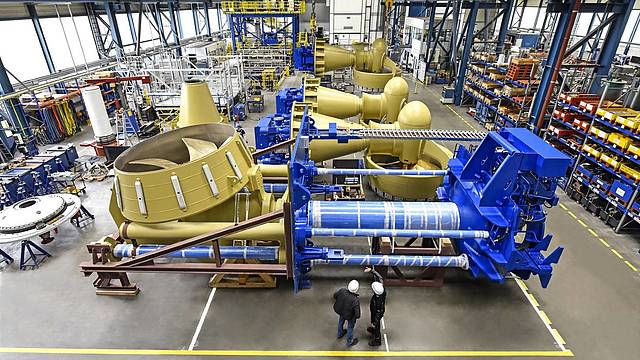The main propulsion package for Jan De Nul’s latest heavy-lift crane vessel "Les Alizés" has left the German production plant in Wismar to reach the CMHI Haimen shipyard in China. The full SCHOTTEL propulsion package consists of four rudder propellers, two retractable rudder propellers, and two transverse thrusters to ensure optimal propulsion efficiency as well as maximum manoeuvrability. "Les Alizés" is currently under construction and will be deployed for the construction of offshore wind farms after its delivery.

SCHOTTEL thrusters for maximum propulsion efficiency
The main propulsion system of the crane vessel consists of four electrically driven SCHOTTEL RudderPropellers type SRP 610 — each with an input power of 3,000 kW and a propeller diameter of 3.3 m — installed at the stern. With this setup, "Les Alizés" will achieve a maximum speed of 13 kn.
To ensure precise positioning in DP mode, two SCHOTTEL Retractable RudderPropellers type SRP 610 R (3,250 kW each with a propeller diameter of 3.0 m) and two SCHOTTEL TransverseThrusters type STT 7 (2,600 kW each with a propeller diameter of 2.79 m) are installed in the bow. The retractable units are fitted with an 8° downwards-tilted propeller shaft to reduce thruster-thruster and thruster-hull interactions and increase propulsion efficiency.
Loading, transporting, lifting and installing turbine foundations
"Les Alizés" will mainly be used for the construction of offshore wind farms but is also suitable for decommissioning offshore oil and gas platforms. The key features include a main crane of 5,000 tonnes, a loading capacity of 61,000 tonnes and a deck space of 9,300 m². With these characteristics, "Les Alizés" can transport heavier foundations, several in one trip, to the offshore installation site.
As a result, it responds to the global trend within the offshore wind energy sector to design and install increasingly larger wind turbines. This new generation of turbines can be more than 270 metres high, have blades up to 120 metres long, and sit on foundations weighing up to 2,500 tonnes.
The crane vessel is scheduled to enter operation in 2022.